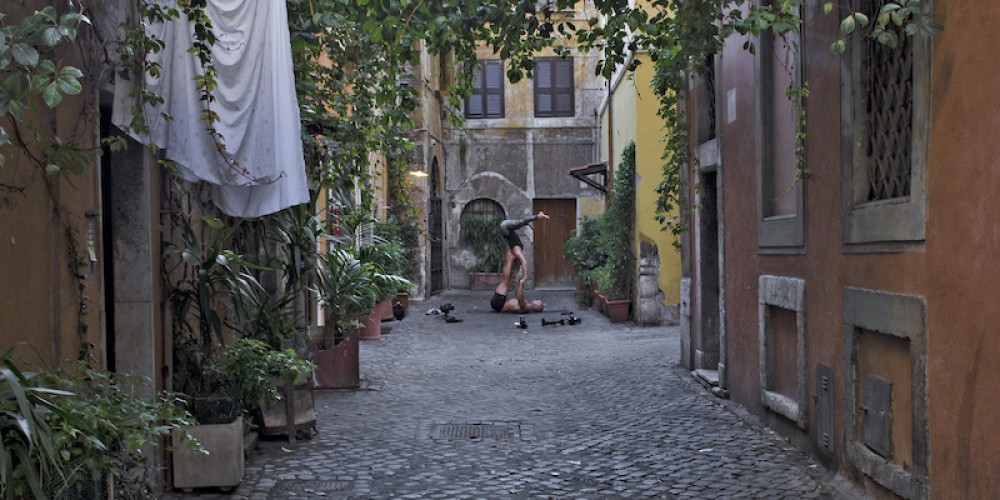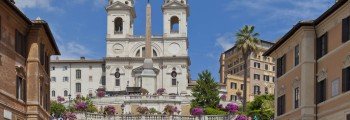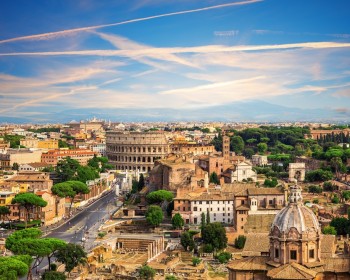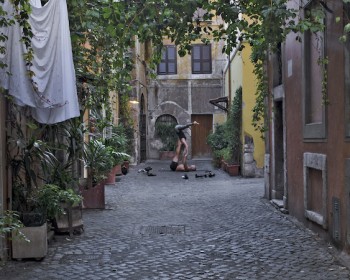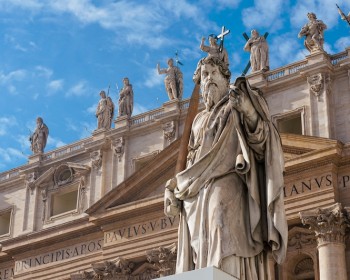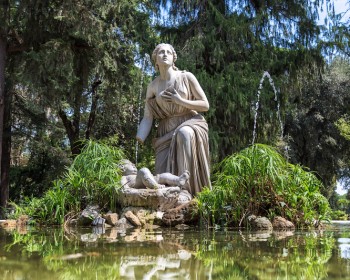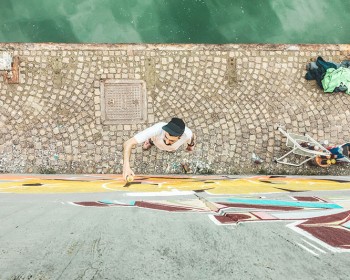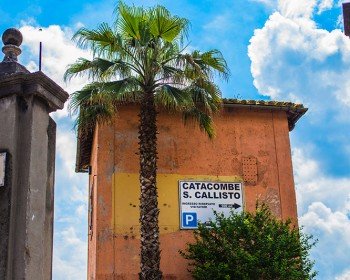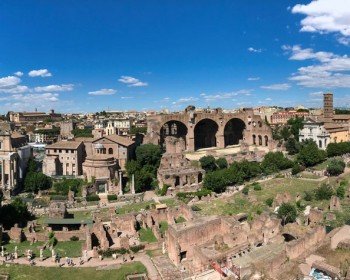An Unusual and Little-Known Rome
Rome is known and admired worldwide for its millennial monuments. Trevi Fountain, the Pantheon, the Colosseum, St. Peter's Square, the Vatican Museums... the list of what makes this city a must-visit destination in your lifetime could go on and on. However, we want to suggest a list of lesser-known and less frequented places and experiences that are more enjoyable and appreciable, allowing you to discover an unseen side of Rome, among art, nature, religion, and gastronomy. Let's discover it together!
Aventine Hill and the Keyhole of the Knights of Malta
Let's start our itinerary from one of Rome's seven hills, the southernmost one, with a view of the Tiber River. We are talking about the Aventine Hill, which, with its glimpses and gardens, offers visitors pleasant breaks away from the city's chaos. A few meters from the well-known Giardino degli Aranci, visited daily by hundreds of people who come here to admire the extraordinary panorama from the large terrace that borders the park, you can discover some of the most admirable examples of contemporary residential architecture, surrounded by tree-lined and well-kept streets and churches of significant architectural and religious importance, such as the Church of Santa Sabina and Sant'Alessio.
After getting lost in the maze of streets with ups and downs and small squares, we suggest spending a few minutes at the Piazza dei Cavalieri di Malta. Here you will find a green door with the famous Keyhole of the Knights of Malta. Peeking through it, your eyes will be literally amazed. In front of you, there is a dense corridor of hedges, at the end of which, through a suggestive perspective effect, the Basilica of St. Peter will appear in all its magnificence. Although it can no longer be considered one of the most unusual and little-known places in Italy's capital, having become very popular and frequented in recent years, the Keyhole of the Knights of Malta remains a must-visit during your stay. To avoid long queues, we recommend visiting early in the morning or in the evening before sunset.
Garbatella
Just a few kilometers from the Aventine Hill is Garbatella, a neighborhood that recently celebrated its 100th anniversary. Founded in 1920 as a residential area for workers, Garbatella is an extraordinary example of Italian Rationalist architecture and early 20th-century urban planning. How can you fully enjoy this experience among the neighborhood's alleys? By immersing yourself in its unique atmosphere and getting involved in the strong sense of community that characterizes the area.
A distinctive feature of Garbatella, which is absolutely worth visiting and photographing, is the so-called “Lotti,” groups of residential houses that combine multiple architectural styles, characterized by charming courtyards, gardens, and shared internal spaces. Entering the Lotti scattered here and there in the neighborhood, you will immediately feel part of a familiar and intimate environment.
Lose yourself among the alleys that go up and down the neighborhood and take a break for a delicious lunch or an aperitif. Garbatella is known for its typical trattorias and historic bars; do not miss the chance to live exactly like a local! The best time to visit the area? Definitely early in the morning, when the bars and bakeries in the area fill the alleys with the aroma of exquisite croissants and freshly baked bread, and at sunset, to admire the warm rays of the sun against Garbatella's houses.
Quartiere Coppedè
Now let's move to the northern part of the city to visit Quartiere Coppedè, one of the most characteristic experiences you can have in Rome. An authentic architectural gem, a neighborhood within a neighborhood, that appears magically amid the narrow streets of the Trieste district. The feeling you get when visiting is definitely a wow. We recommend starting the tour at the corner of Via Dora and Via Tagliamento for an impactful view.
The neighborhood was designed by architect Gino Coppedè between 1913 and 1927 and is named after its creator. But what characterizes this network of streets so much that it has become one of the most appreciated destinations for walking tours around Rome? Certainly the unique and surreal style of some houses and its squares, where elements of Liberty, Art Nouveau, Baroque, and medieval styles blend. An almost fairy-tale atmosphere with fountains, decorations, spires, frescoes, and mosaics in a whimsical and enchanted architecture. Absolutely not to be missed is the Villino delle Fate, the Palazzo del Ragno, and the Fontana delle Rane.
Although it is a place rarely visited by tourists, we also recommend coming here early in the morning or in the afternoon. Take a tour of the neighborhood streets and then head to one of the elegant bistros a few meters away, towards Via Chiana and Via Tagliamento, for an aperitif or dinner to discover Roman culinary delights.
Parco degli Acquedotti
Little known by tourists, it is one of the most peculiar places in Rome. We are talking about Parco degli Acquedotti, a protected area close to the Parco Archeologico dell’Appia Antica, in the southeast quadrant of Rome.The absolute protagonists of this park are the two aqueducts, Aqua Felix and Aqua Claudia. The first was built by Pope Sixtus V in the 16th century, while the second, much older, was built during the Empire by Claudius to bring water from the Colli Albani to the city center.
An ideal place if you are looking for a rejuvenating break, immersed in nature but at the same time in the heart of the city – the park is just a few meters from the Lucio Sestio Metro A stop – and if you want to see how locals live when they come here to engage in healthy sports activities or just for a simple walk. If you love photography, the best time to come here is at sunset, with the arches of the aqueduct creating a breathtaking backdrop.
The park, being public, is always open and free.
Galleria Sciarra
Even in the heart of Rome, next to the most well-known and visited monuments and attractions, there is an architectural gem worth visiting. Galleria Sciarra is only a two-minute walk from Trevi Fountain but is not well-known to the general public. Built in the late 19th century by Prince Maffeo Barberini Colonna Sciarra, who wanted to connect the various buildings of his property. Take a few minutes to visit this charming covered courtyard, which was created to serve as a quick connection and still retains this shortcut function for Romans who pass through it daily. The courtyard is decorated in Art Nouveau style with an iron and glass ceiling that brings beautiful light inside. The frescoes present depict what the artist, Giuseppe Cellini, believed were feminine virtues, including strength, justice, and loyalty.
The gallery is free to visit but open to the public only during working hours.
La Casina delle Civette Villa Borghese
Within Villa Torlonia, a historic park located in the northern part of Rome, another place to visit is the Casina delle Civette, designed in Liberty style. The building takes its name from the many owls represented and present in the house. Famous and appreciated for its splendid stained glass windows by master glassmaker Cesare Picchiarini and for its wrought iron, carved wood, and ceramic decorations. Again, as with Quartiere Coppedè, the feeling is of entering a fairy-tale place with decorations of animals, flowers, and symbolic figures. Inside, the house is furnished with period furniture reflecting the style of the Torlonia family.
The Casina delle Civette is open every day, and the visit is subject to a fee. For more information, it is advisable to visit the official website.
Conclusion
These little-known and visited gems scattered from north to south of the city can make your stay in the Eternal City even more unique and magical. Parks, buildings, entire neighborhoods: after visiting the places we suggested in this article, your knowledge of Rome will be undoubtedly more complete and more connected to the reality that Romans live daily.
